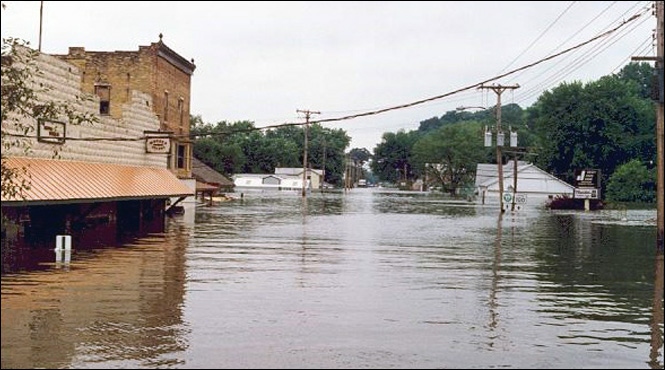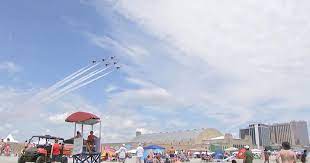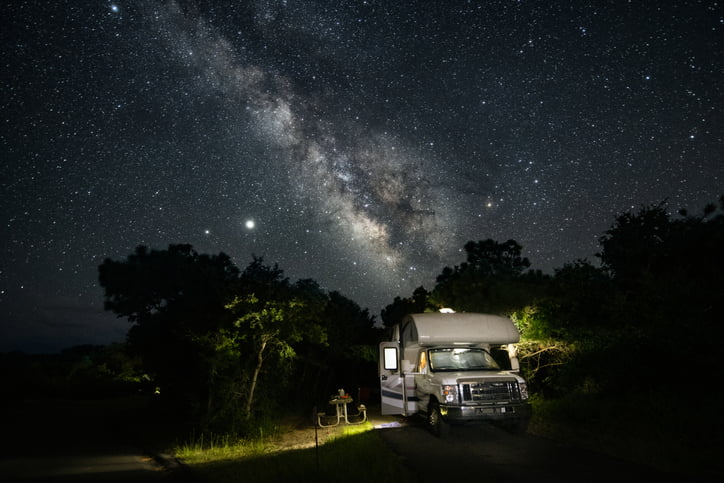Attention, everyone in Southeastern Illinois: a Flood Watch has just been issued, and you’ll want to take this seriously. We’re in for some heavy rainfall starting today, and it’s expected to last through the weekend. While rain can sometimes be a welcome sight, this particular storm could bring up to 3 inches of rain to our area, and that means flash flooding is a real threat.
Here’s What to Expect:
The rain is going to start falling steadily over the next couple of days, and depending on where you live, you could get anywhere from 1 to 3 inches of rain. With the ground already soaked from previous storms, it doesn’t take much to cause water to rise fast—especially near rivers, streams, and in low-lying areas. That’s where flash flooding becomes a real danger. If you’re in an area that typically floods, now’s the time to get prepared.
The National Weather Service issued the Flood Watch for good reason: this rain could come down quickly, and that means it could overwhelm streets, drainage systems, and rivers. Flash floods are especially dangerous because they happen so fast. In a matter of hours—or even minutes—roads can become impassable, and water levels can rise to dangerous levels.
Which Areas Are at Greatest Risk?
While everyone in Southeastern Illinois is at risk of flooding, some areas will feel the effects more than others. Here’s where you should be extra cautious:
-
Charleston & Mattoon: These cities are especially vulnerable because they’re near the Embarras River. Heavy rain could cause the river to overflow, putting streets and low-lying neighborhoods at risk of flooding. If you live near the river or in an area that’s prone to water rising quickly, stay alert and make preparations now.
-
Effingham & Olney: Further south, Effingham and Olney are also in the danger zone. The heavy rain could cause nearby streams and Rend Lake to overflow. Rural areas—especially roads that are lower than the surrounding land—could see flooding, making it hard to get around. Be sure to stay aware of weather updates if you’re in these areas.
-
Rural Areas: Flash floods don’t just hit cities; they can happen in rural areas too. Even places that don’t usually flood can be impacted by heavy rainfall. Small streams and creeks can rise quickly and catch people off guard. If you live in a rural area, make sure you have an emergency plan in place and know where the nearest higher ground is.
Why Flash Flooding Is So Dangerous
Flash floods are not like regular floods—they happen fast. You might be going about your day, and before you know it, streets are turning into rivers. Flash floods can rise in a matter of minutes, and once the water starts moving, it can sweep cars off the road, knock people down, and trap you in places you thought were safe.
It’s not just a risk for people who live near rivers, either. Even 6 inches of water can knock you off your feet, and 12 inches can wash a vehicle away. Do not drive through flooded roads, even if the water looks shallow. It only takes a small amount of water to make roads dangerous, and you can’t always tell how deep the floodwater is.
Flash floods also create huge problems for travel. A familiar road could be completely submerged in just a few hours, making it hard to get where you need to go—or even harder to get out of your area if you need to evacuate. That’s why it’s so important to take action now.
What You Can Do to Stay Safe
Now that you know the storm is coming, it’s time to get prepared. Here are some steps you can take today to stay safe:
-
Stay Updated on the Weather: Keep an eye on weather alerts, whether it’s through your phone, TV, or a weather app. This is especially important if the rain picks up suddenly. The more you know about the conditions, the better prepared you’ll be to act.
-
Avoid Driving Through Flooded Streets: It’s tempting to try and drive through a puddle or flooded road, but that’s never a good idea. The saying “Turn Around, Don’t Drown” is there for a reason. Even just a few inches of water can turn a road into a dangerous trap. If you see standing water, turn around and find another route.
-
Protect Your Home: If you live in an area prone to flooding, take a few simple steps today to protect your home. Move important items like electronics, valuables, and documents to higher ground. Clear gutters and storm drains around your house to ensure that water has a place to flow. If you have a basement, consider sandbagging around windows and doors to keep the water out.
-
Prepare an Emergency Kit: It’s always good to have a few essentials packed and ready in case you need to leave quickly or power goes out. Make sure you have things like flashlights, batteries, water, snacks, and a first aid kit. Don’t forget medications or important documents like IDs or insurance papers.
-
Know Where to Go: If conditions worsen and you need to evacuate, you should know where to go. Plan your escape route to higher ground and make sure you have a list of nearby shelters or safe spots. If you have pets, don’t forget to plan for them too!
-
Help Your Neighbors: It’s easy to get caught up in your own preparations, but if you have elderly neighbors or family members who may need help, check in on them. A quick call or visit to make sure they’re ready can make all the difference. If you can help, offer it.



